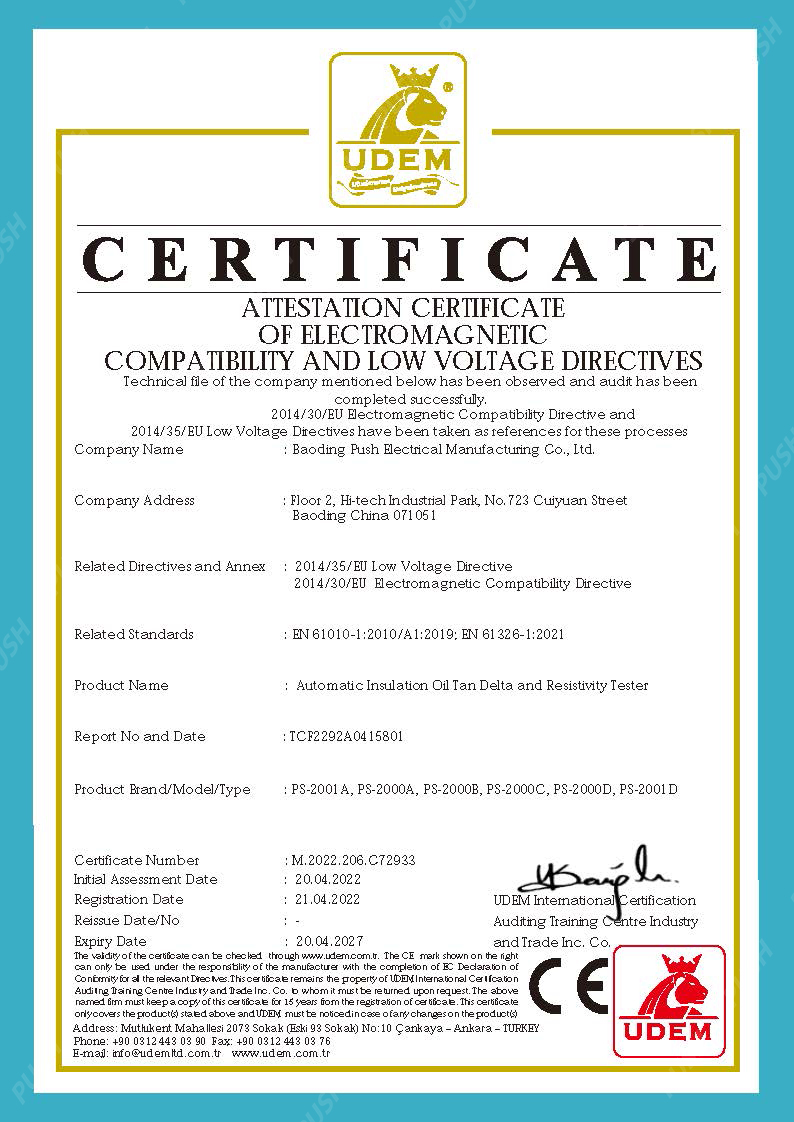 English
English


High Voltage Insulation Testing Methods for 33kV Power Cables in Electrical Engineering Applications
Understanding the 33kV Cable Hipot Test
The 33kV cable hipot test, also known as a high potential test, is a critical procedure in the field of electrical engineering, particularly for the insulation testing of high-voltage cables. This test is essential for ensuring that the insulation materials used in cables can withstand the operational voltages they will encounter, thus preventing electrical failures and ensuring long-term reliability.
What is the Hipot Test?
The term hipot is derived from high potential and refers to a type of electrical test that applies a high voltage to a cable or component to assess its insulation strength. In the case of a 33kV cable, the hipot test involves applying a voltage substantially higher than the cable's rated voltage, typically around 1.5 to 2 times the nominal voltage of 33kV. This is done to identify any weaknesses or defects in the insulation system that could lead to breakdowns or failures during regular operation.
Purpose of the Test
The primary purpose of the hipot test is to verify the integrity of insulation in high-voltage cables. Over time, cables can be subjected to various stresses, including thermal aging, mechanical wear, and environmental factors, which can degrade their insulation properties. By conducting a hipot test, engineers can detect insulation failures before a cable is put into service or identify potential issues in cables that are already operational.
Testing Procedure
The testing procedure typically involves the following steps
1. Preparation The cable must be disconnected from the power source and properly grounded to ensure safety. It is also essential to inspect the cable visually for any visible damage.
33kv cable hipot test

2. Voltage Application The hipot tester is connected to the cable, and a gradual increase in voltage is applied until it reaches the specified test voltage. This process requires careful monitoring to avoid damaging the cable.
3. Monitoring During the test, the insulation resistance is monitored. A significant drop in resistance or an increase in leakage current indicates a potential failure in insulation.
4. Test Duration The duration of the test can vary, but it commonly lasts between one to five minutes. The longer duration allows for more thorough assessment of the insulation.
5. Post-Test Inspection After the test, the cable is slowly brought back to its operational voltage, and further inspections are conducted to ensure no damage has occurred during testing.
Safety Considerations
Safety is paramount when performing a hipot test, especially considering the high voltage involved. Personnel must use appropriate personal protective equipment (PPE) and ensure that the test area is secure and free of unauthorized access. Furthermore, proper grounding and isolation procedures must be observed to prevent accidental electrical shocks.
Conclusion
In summary, the 33kV cable hipot test is a vital procedure for ensuring the reliability and safety of high-voltage cable systems. By effectively identifying potential insulation weaknesses, this test plays a crucial role in preventing electrical failures, thereby safeguarding both equipment and personnel. Regular hipot testing, along with other maintenance inspection practices, helps ensure the longevity and performance of electrical infrastructure, ultimately contributing to more efficient and safer power distribution systems. As electrical systems become increasingly complex, the importance of thorough testing procedures like the hipot test cannot be overstated.
-
Differences between open cup flash point tester and closed cup flash point testerNewsOct.31,2024
-
The Reliable Load Tap ChangerNewsOct.23,2024
-
The Essential Guide to Hipot TestersNewsOct.23,2024
-
The Digital Insulation TesterNewsOct.23,2024
-
The Best Earth Loop Impedance Tester for SaleNewsOct.23,2024
-
Tan Delta Tester--The Essential Tool for Electrical Insulation TestingNewsOct.23,2024





